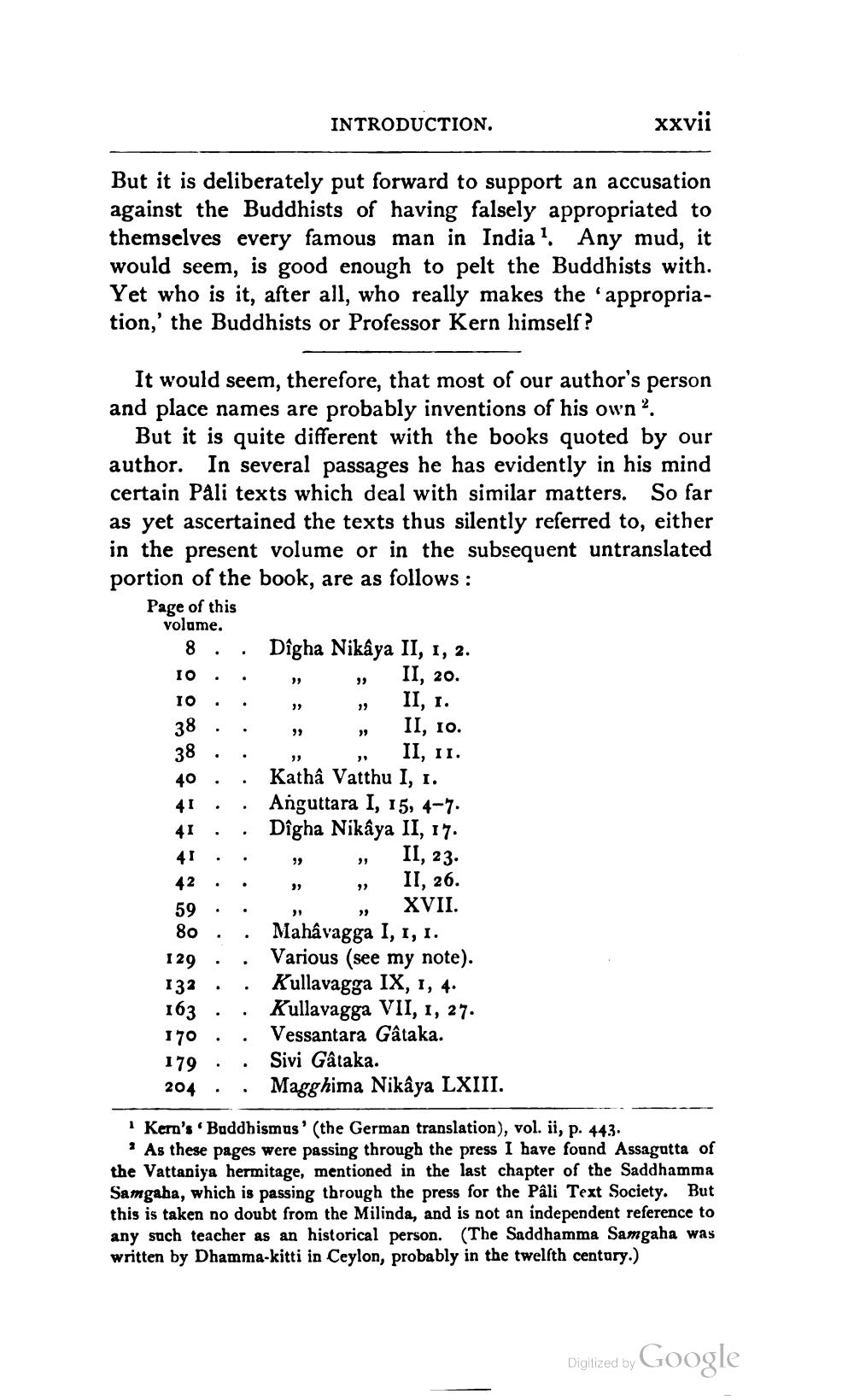________________
But it is deliberately put forward to support an accusation against the Buddhists of having falsely appropriated to themselves every famous man in India1. Any mud, it would seem, is good enough to pelt the Buddhists with. Yet who is it, after all, who really makes the 'appropriation,' the Buddhists or Professor Kern himself?
It would seem, therefore, that most of our author's person and place names are probably inventions of his own 2.
Page of this volume.
8
10
IO
38
But it is quite different with the books quoted by our author. In several passages he has evidently in his mind certain Pâli texts which deal with similar matters. So far as yet ascertained the texts thus silently referred to, either in the present volume or in the subsequent untranslated portion of the book, are as follows:
38
40
4I
4I
41
42
59
80
129
132
163
170
179 204
.
•
•
Digha Nikaya II, 1, 2.
II, 20.
II, 1.
II, 10.
II, II.
""
39
INTRODUCTION.
99
19
39
99
22
35
Katha Vatthu I, 1. Anguttara I, 15, 4-7. Dîgha Nikaya II, 17.
II, 23.
II, 26.
XVII.
Mahâvagga I, I, I. Various (see my note). Kullavagga IX, 1, 4. Kullavagga VII, 1, 27.
Vessantara Gâtaka.
Sivi Gâtaka.
Magghima Nikaya LXIII.
1 Kern's 'Buddhismus' (the German translation), vol. ii, p. 443.
As these pages were passing through the press I have found Assagutta of the Vattaniya hermitage, mentioned in the last chapter of the Saddhamma Samgaha, which is passing through the press for the Pâli Text Society. But this is taken no doubt from the Milinda, and is not an independent reference to any such teacher as an historical person. (The Saddhamma Samgaha was written by Dhamma-kitti in Ceylon, probably in the twelfth century.)
""
ور
39
xxvii
99
"9
Digitized by Google




